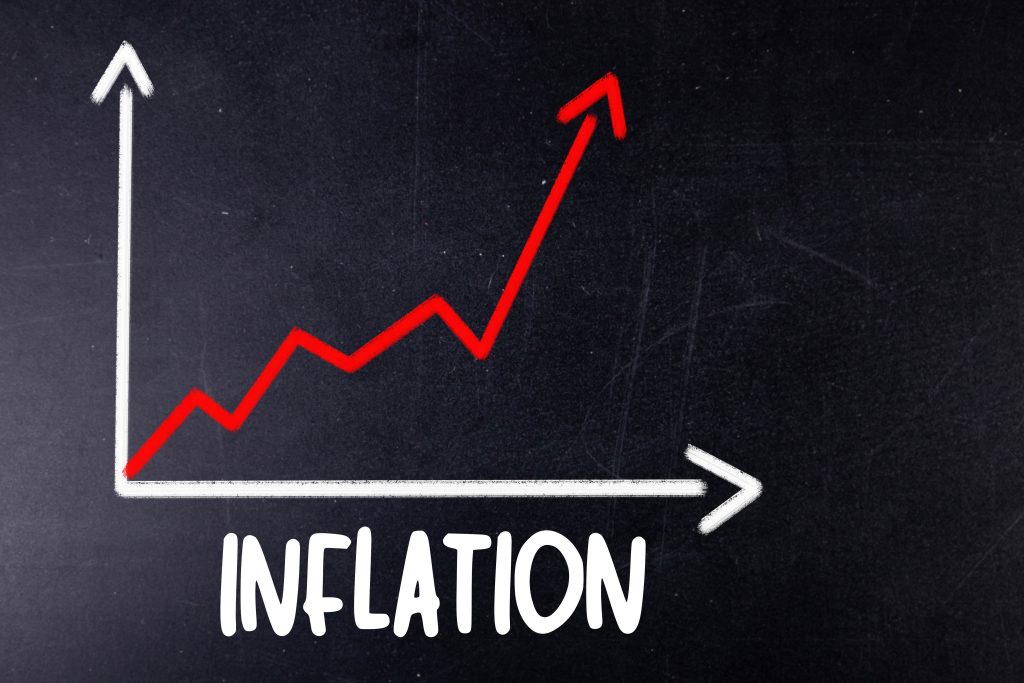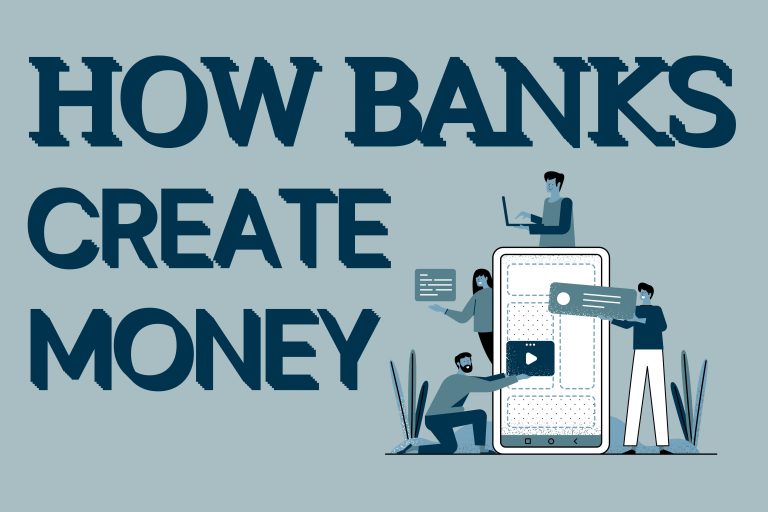In the previous article, we discussed how central banks create money. However, it’s important to note that commercial banks also have the ability to create money as well. Let’s explore how they do it.
When you take a loan from a bank to buy something like a house, car, or TV, the bank actually creates new money out of nothing to lend you. And the catch is, you still have to pay interest on that loan. The former governor of the Central Bank of Canada, Graham Towers stated that “Each and every time a bank makes a loan, new credit is created. New deposits. Brand-new money.” Similarly, the deputy governor of the Bank of England, Paul Tucker, also confirmed that “Banks extend credit by simply increasing the borrowing customers’ current account.” So, what this means is that when a bank gives you a loan, it doesn’t use the money deposited by other people, but instead creates fresh money.
Misconceptions about How Banks Operate
Many people have incorrect ideas about how banks operate. The Cobden Center conducted a survey to find out people’s perceptions about the workings of Banks.
Approximately 33% of the population believes that when they deposit money into a bank, it remains there securely. This perception can be attributed to the common practice of children having piggy banks, where they save money and then break it open to spend during emergencies. Hence, many people have the notion that banks are a reliable place to store their money until they require it.
the other 60% of people believe that when you deposit money, it goes directly to someone who needs to borrow it. For example, a retired person may save money throughout their life, and that money may be lent to young individuals who want to purchase a house.
In reality, private banks have significant power over the creation and control of money. Around 97% to 98% of money is created when banks lend money to the public. Most of that money is created through digital means. Bankers convinced policymakers and sought permission to create additional deposits based on debt. Initially, banks had seen many bank runs. These are instances of depositors demanding all their money at once. Banks argued that they should be legally permitted to create more deposits than the actual amount of money they have based upon debt. This is how governments delegate the responsibility of creating digital money to private banks.
Fractional Reserve Lending
Don’t be shocked. But when you deposit your money in the bank, it’s not simply stored for safekeeping. Instead, you are actually lending your money to the bank. The bank can then use your money for anything they please within the boundaries of the law. This may include investing in stocks or lending it to others. The bank makes a profit from this practice.
Fractional reserve lending is a process that allows banks to lend out significantly more money than the original deposit. It works like this. Banks are only required to hold a fraction of deposited funds as reserves and can loan out the rest. Reserve ratios may vary. Let’s assume a 10 percent reserve ratio for our explanation. When you deposit $1,000 in the bank, the bank will set aside 10%, which is $100, as reserve money in case you need it. This reserved money is known as ‘Vault Cash‘. Legally, the bank can take the remaining $900 and lend it to others without informing you. They will charge interest on this loan.
The individual who borrowed $900 pays that money to another person. The other person then takes the $900 and puts it in the bank. The bank keeps $90, which is 10% of the $900, and lends out the remaining $810. The person who borrowed the $810 gives it to someone else, who then deposits it in the bank. The bank keeps $81 (which is 10% of $810) and lends out the rest. This process continues, creating bank credit numbers. At this point, there are now $2,710 in circulation ($1,000 original deposit + $900 first loan + $810 second loan).
The Monetary Multiplier Effect
After a series of transactions, eventually, the bank will be able to lend out $10,000 using only the initial thousand dollars you deposited. Considering the large number of transactions occurring in today’s banks, this process happens very quickly. This is basically instant. This phenomenon, known as the monetary multiplier effect or the infinite money glitch.
In this example, $1,000 in deposit can be turned into $10,000 in the economy without any additional resources. $9,000 is created out of nothing. Add a few zeros to those numbers, and you can begin to grasp the extent to which money can be created through fractional reserve banking. Bankers have the ability to create money out of thin air, while the rest of us have to work for it.
Bank Account Balance
Why does your bank account still show a balance of one thousand dollars even if the bank has loaned out nine hundred dollars? It’s because the bank replaced the loaned amount with an I.O.U called ‘bank credit’. This bank credit is just numbers entered into their computer system. Even though it’s different from the physical base currency, bank credit still holds value as a form of currency. So now there is a total of one thousand nine hundred dollars in circulation, ($1,000 original deposit + $900 loan). Banks have the ability to create this currency electronically out of thin air by simply entering numbers into their computer system. This digital money is what we currently use for transactions and running the economy. When you transfer money, you’re essentially moving the electronic funds from one computer system to another. It’s all a big database.

When you deposit just one hundred dollars, it can generate up to one thousand dollars of bank credit, all backed by only one hundred dollars in physical cash stored in the bank’s vault, which is just 10 percent. However, reserve ratios differ greatly, with some deposits having a 10 percent ratio, others having 3 percent, and certain types of deposits having zero requirements. Consequently, the expansion of the currency supply by banks far exceeds what this example illustrates.
In other words, the majority of our currency supply is actually generated through this cycle of lending, redepositing, and relending, with only 3% existing in physical cash issued by the government.
What is the Impact of Letting Banks Create Money?
Firstly, when banks make loans, they create new money. This means that in order for the economy to function and to keep the economy healthy and growing, we have to borrow money all the money into existence. We have to borrow from the banks and other financial institutions. The government must implement strategies that allow for increasing levels of debt for itself and for us.
Secondly, banks have a motivation to continually generate more money. When they give out loans, they receive bonuses, commissions, and other rewards for creating money. To lend as much money as possible, banks have fostered a culture focused on selling. This increases the currency supply without a limit. This additional money dilutes the value of the existing money over time. This is what we call inflation. The banks will keep accumulating debt until a point where it crashes. It becomes too much for some borrowers to repay, and at this point, the banks will stop giving out loans.
The third reason, banks distribute money according to their own priorities, rather than the broader societal needs. When banks purchase securities like government bonds, they add these bonds to their assets, thus increasing their own wealth. According to the Kenya Bankers Association’s state of the banking industry report 2022, the banking sector’s total assets increased by 11.4 percent to Kshs. 6.0 trillion from Kshs. 5.4 trillion in 2020, owing primarily to growth in investments in government securities and private sector gross loans, which accounted for 78.3 percent of total assets.
Debt-Based Monetary System
Debt is created when central banks and commercial banks create money from nothing. When you borrow money, it is recorded as an asset for the bank as a negative value of money, known as debt. Under this system, debt is actually money. According to Marriner Eccles, a former central bank governor, “If there are no debts in our money system, there wouldn’t be any money.” Debt has become the foundation of our economy, instead of gold. This system is known as the debt-based monetary system, and it requires that debt constantly increases.
Both countries and individuals need to accumulate more debt in order to have more money in the system. Debt is money. If people and governments stop borrowing money, the debt won’t grow, the money supply will decrease, and the system will fail. It may sound strange, but we all live within this system on a daily basis.
Inflation
When a massive amount of currency is pumped into the economy, it may seem like a fun idea… however, the prices of everyday goods and services absorb this influx of money. The more currency we have, the higher prices rise. This is known as inflation. Inflation is actually the expansion of the currency supply, and rising prices are just a symptom of it. So, our entire currency supply is essentially just currency created through a system where the Treasury and central bank exchange IOUs (bonds and cheques) and a bunch of numbers that the banks just type into their computers. That’s all there is to our money supply. It’s just a bunch of numbers, some of them printed and most of them typed. And that’s it. This is the strange world of modern economics.
In simple terms, inflation can be seen as a tax that affects everyone due to the dishonest practice of creating money from nothing. This is evident in the significant difference in prices from the past to today. As long as this system continues, prices will continue to rise, making things more expensive.

Conclusion
A bank is responsible for creating money in our country through fractional reserve lending. It also makes loans to make a profit. It is important for the government to prevent the banking system from collapsing because if it does, a large majority of our currency, over 97%, would vanish. Therefore, in times of crisis, the government will bail them out. This is a burden that is placed on the taxpayer.
Basically, it is the central banks that are in charge of our economy, and the central and commercial banking system collectively control all of our money. The main distinction is that central banks have the ability to create money whenever they want, whereas commercial banks require loans in order to create money. The government does not directly benefit from money created by commercial banks. Next, we will explore the concept of The Gold Standard in our upcoming article.


